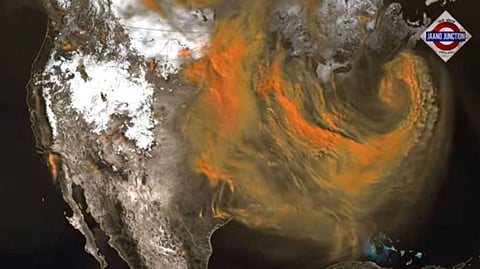

NASA has released a mew high-resolution model that visualises the movement of carbon dioxide across the globe, including over India, offering unprecedented insights into the dynamics of this crucial greenhouse gas.
The model, created by NASA's Scientific Visualisation Studio using the Goddard Earth Observing System (GEOS), provides a detailed look at CO2 concentrations from January to March 2020.
The visualisation, powered by supercomputers, combines billions of data points from ground observations and satellite instruments to create a map over 100 times more detailed than typical weather models. This high resolution allows viewers to zoom in on specific emission sources, such as power plants, fires, and cities, and observe how CO2 spreads across continents and oceans.
Dr. Lesley Ott, a climate scientist involved in the project, noted that the model revealed persistent plume structures and interactions with weather systems that were previously unobservable in coarser simulations.
The map clearly shows that in China, the United States, and South Asia, most emissions originated from power plants, industrial facilities, and vehicles.
In contrast, Africa and South America's emissions were largely due to fires, including those related to land management, agricultural burns, and deforestation.
This visualisation comes at a critical time, as carbon dioxide levels continue to rise, contributing to global warming. NASA reports that 2023 was the hottest year on record, with most of the ten hottest years occurring in the past decade. The concentration of CO2 in the atmosphere has increased from about 278 parts per million in 1750 to 427 parts per million in May 2024.
While some CO2 is necessary for maintaining Earth's temperature, the rapid increase in atmospheric CO2 over the past half-century has led to accelerated warming.
This new model provides valuable data for understanding and potentially mitigating the impact of CO2 emissions on our planet's climate.
